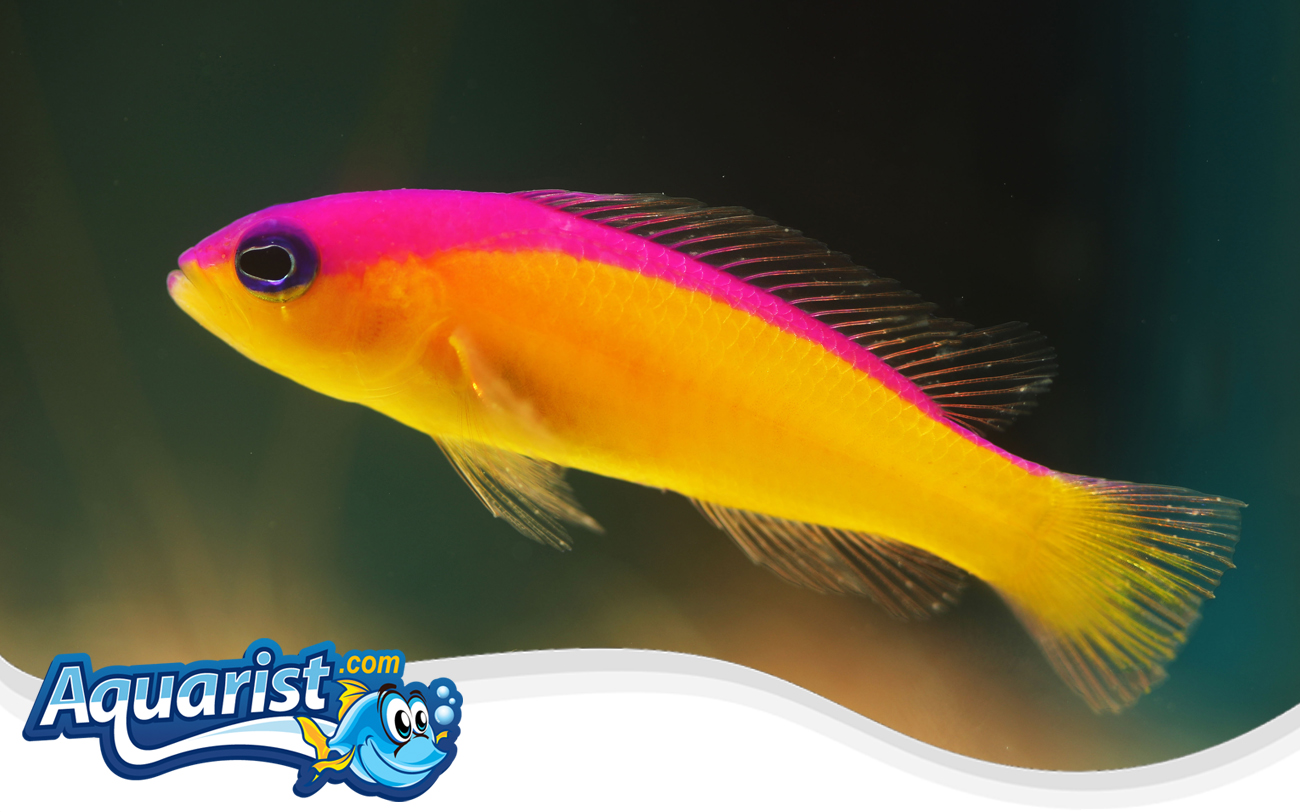Overview
- Native to the Indo-Pacific region, typically inhabiting coral reefs and rocky crevices.
- Distinctive coloration featuring a vivid purple body with a yellow dorsal stripe running from head to tail.
- Known for its bold and territorial nature, suitable for experienced marine hobbyists.
- Popular for vibrant colors and active behavior, adding lively character to aquariums.
Feeding
- Carnivorous diet; naturally feeds on small invertebrates and crustaceans.
- Readily accepts a variety of aquarium foods including mysis shrimp, brine shrimp, chopped seafood, and high-quality marine pellets or flakes.
- Multiple small feedings daily recommended for optimal health and vibrant coloration.
- Ensuring dietary variety is essential for long-term nutritional health.
Habitat
- Suitable for moderately sized aquariums (minimum 30 gallons) with ample hiding places and structured live rock formations.
- Requires a stable, mature aquarium environment for long-term success.
- Provide numerous caves, crevices, and hiding spots to replicate natural habitat and reduce aggression.
- Moderate water flow and efficient filtration required for maintaining water quality.
Fish Care
- Optimal water temperature: 72-78°F (22-26°C).
- Recommended pH: 8.1-8.4; specific gravity: 1.020-1.025.
- Generally hardy but sensitive to sudden water quality changes; regular water testing and maintenance necessary.
- Monitor for signs of marine diseases and parasites; prompt treatment is important.
Compatibility
- Semi-aggressive species best suited for robust tank mates of similar or larger size.
- Reef-safe with caution; may prey on small ornamental shrimp or invertebrates.
- Recommended companions include larger clownfish, dwarf angelfish, tangs, and other semi-aggressive marine fish.
- Territorial, generally kept singly to avoid conflicts unless in larger aquariums.
Aquarium Behavior
- Active and territorial, frequently exploring and defending its preferred hiding spots.
- May show aggression towards similarly sized fish or other dottybacks.
- Providing ample hiding spaces and territorial boundaries helps manage aggression.
- Often engages actively with aquarium caretakers during feeding sessions.


